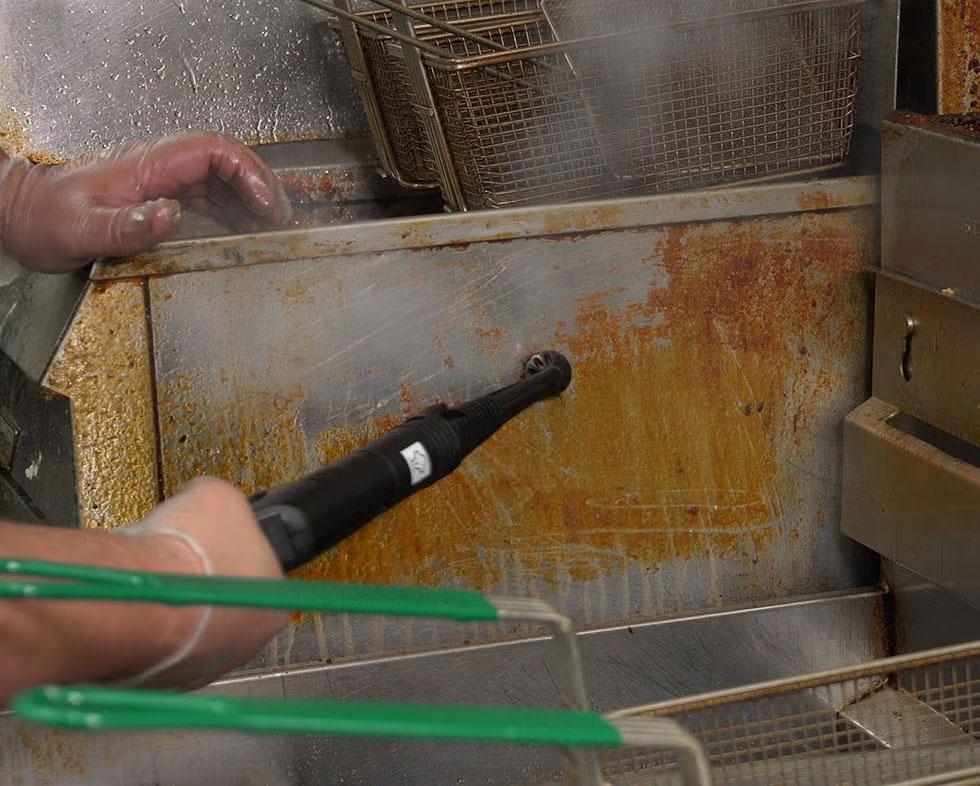
The Ultimate Guide to Cleaning Coils with Dry Steam: Chemical-Free Solutions for Refrigeration and HVAC Systems
Why Dry Steam for Coil Cleaning?
What Is Dry Steam Coil Cleaning?
Dry steam coil cleaning uses high-temperature, low-moisture steam to loosen and dissolve buildup—such as grease, dust, and other contaminants—on coil surfaces. Because it contains less moisture than standard steam or water-based cleaning methods, it’s less likely to cause damage or leave excess water in sensitive areas.
Key Benefits of Dry Steam
- Chemical-Free
- Eliminates the need for harsh chemicals that can pose health risks or potentially contaminate food-related environments.
- Efficient Grease Removal
- High-temperature steam effectively breaks down oils and fats on greased coils.
- Reduced Water Usage
- Dry steam cleaning uses significantly less water, making it more environmentally friendly and lowering utility costs.
- Enhanced Food Safety Ideal for deli coolers, walk-in coolers, and restaurant refrigeration units, reducing the risk of cross-contamination.
Pros and Cons of Dry Steam Coil Cleaning
Pros
- Eco-Friendly & Chemical-Free
- Because dry steam cleaning doesn’t require chemical solvents, it’s safer for both technicians and the environment. This is especially critical in healthcare and food-service settings.
- Time and Cost Savings
- Traditional coil cleaning with water and detergents can be labor-intensive. Dry steam speeds up the cleaning process by dissolving grime more effectively.
- Reduced water usage can also lower overall utility bills.
- Ideal for Tight Spaces & Sensitive Areas
- Systems found in retail stores, healthcare facilities, and residential HVAC often have hard-to-reach coils or sensitive electronics. Dry steam produces minimal water runoff, reducing the chance of damage.
- Enhanced Performance & Efficiency
- A clean coil operates more efficiently, lowering energy consumption and potentially prolonging the lifespan of the refrigeration or HVAC system.
Cons
- Equipment Costs
- Dry steam generators can be more expensive than standard pressure washers or traditional cleaning tools. Initial investment might be high for smaller businesses.
- Specialized Training
- Operating dry steam equipment safely and effectively requires training. Incorrect use can lead to damage or insufficient cleaning.
- Possible Heat Sensitivity
- While dry steam is less likely to cause water damage, certain sensitive electronic components may still require extra caution to avoid overheating.
- Accessibility Limitations
- Very large industrial systems or coils with severe buildup might still require occasional deep cleaning with specialized tools or chemicals.
Best Practices for Dry Steam Coil Cleaning
Step-by-Step Implementation
- Power Down the System
- Always turn off the cooler, HVAC, or refrigeration unit before cleaning to avoid electrical hazards. If there's a lockout/tag-out procedure, use it.
- Pre-Inspect the Coils
- Look for heavy grease, dust buildup, or any signs of damage. Mark these areas to pay extra attention during cleaning. Even though most coils can be cleaned without chemicals, consider pre-treating really greasy spots.
- Adjust Steam Pressure
- Follow the equipment manual to ensure you know how to adjust the steam pressure. Using different pressure can help achieve the right results.
- Use Controlled, Sweeping Motions
- Keep the steam nozzle in motion to evenly distribute heat and avoid lingering in one spot too long.
- Allow for Proper Drying
- Even though it’s “dry” steam, minimal moisture may still remain. Ensure the coils and surrounding area are fully dry before powering the system back on.
Maintenance & Safety
- Regular Inspection: Schedule periodic checks on your cooling systems—weekly for high-grease environments like delis, monthly or quarterly for less demanding settings.
- Protective Gear: Use heat-resistant gloves and goggles when operating steam cleaning devices.
- Ventilation: Steam can carry dislodged contaminants into the air; always ensure adequate ventilation in the work area.
Ready to learn more? Check out the GoodwayProX line of dry steam cleaners.
